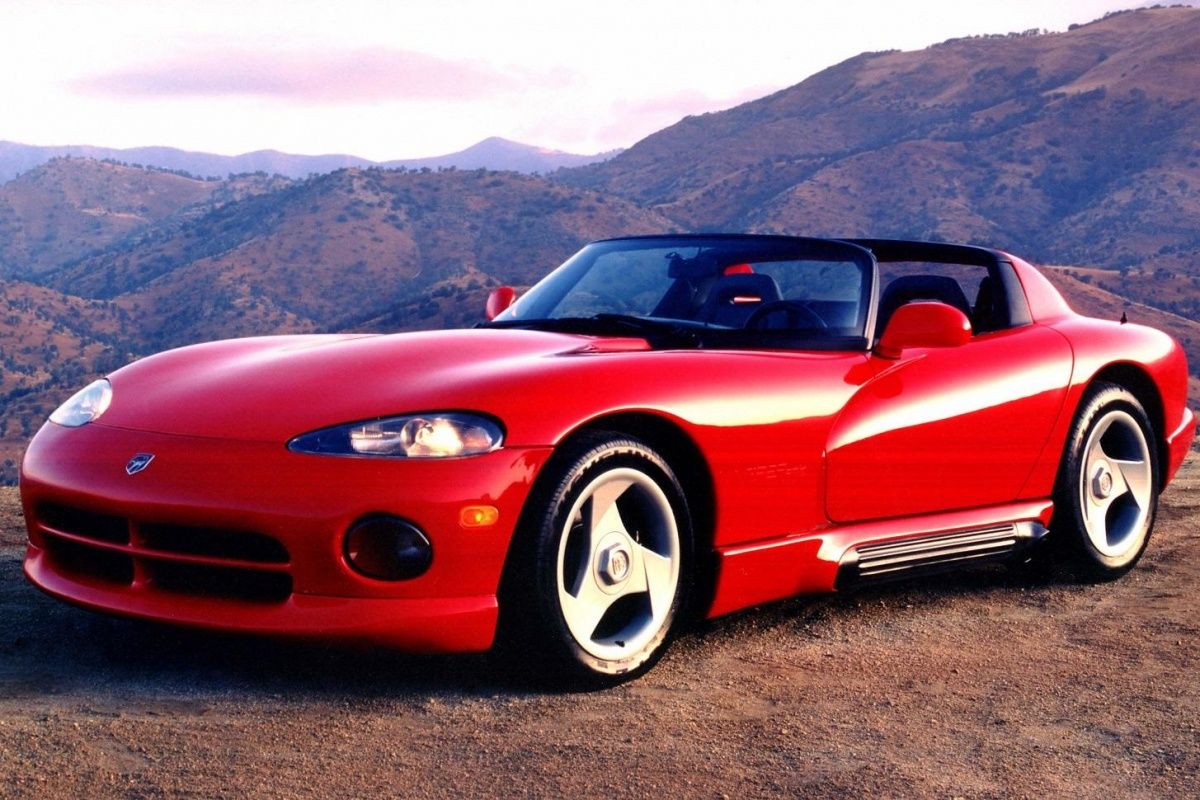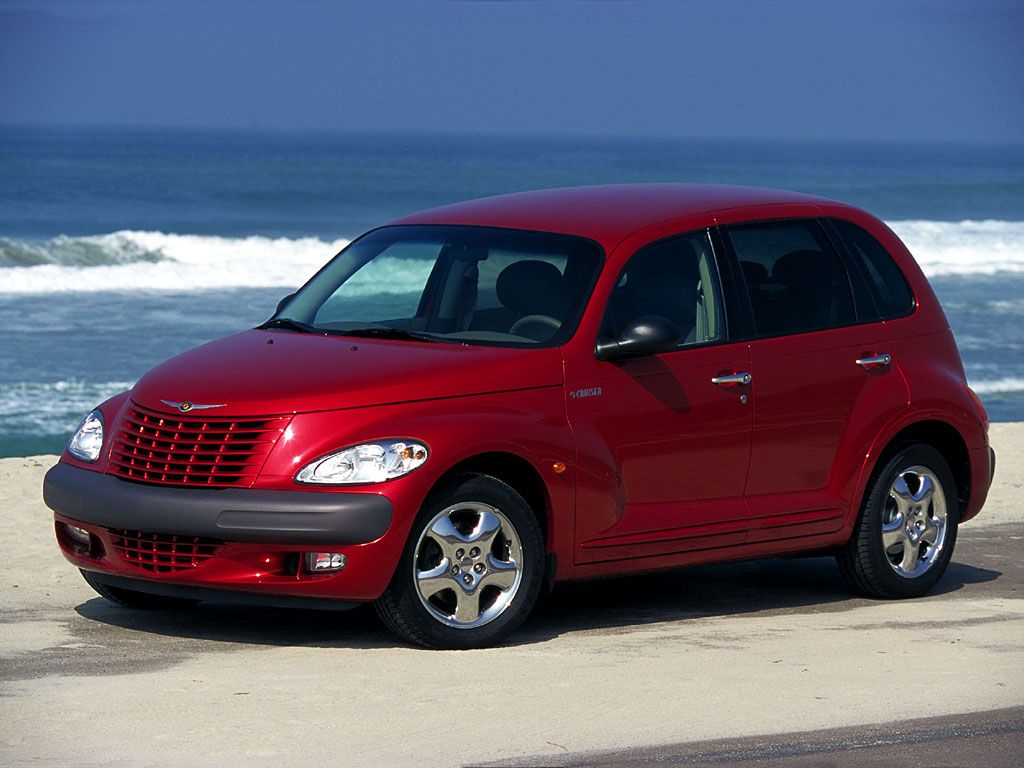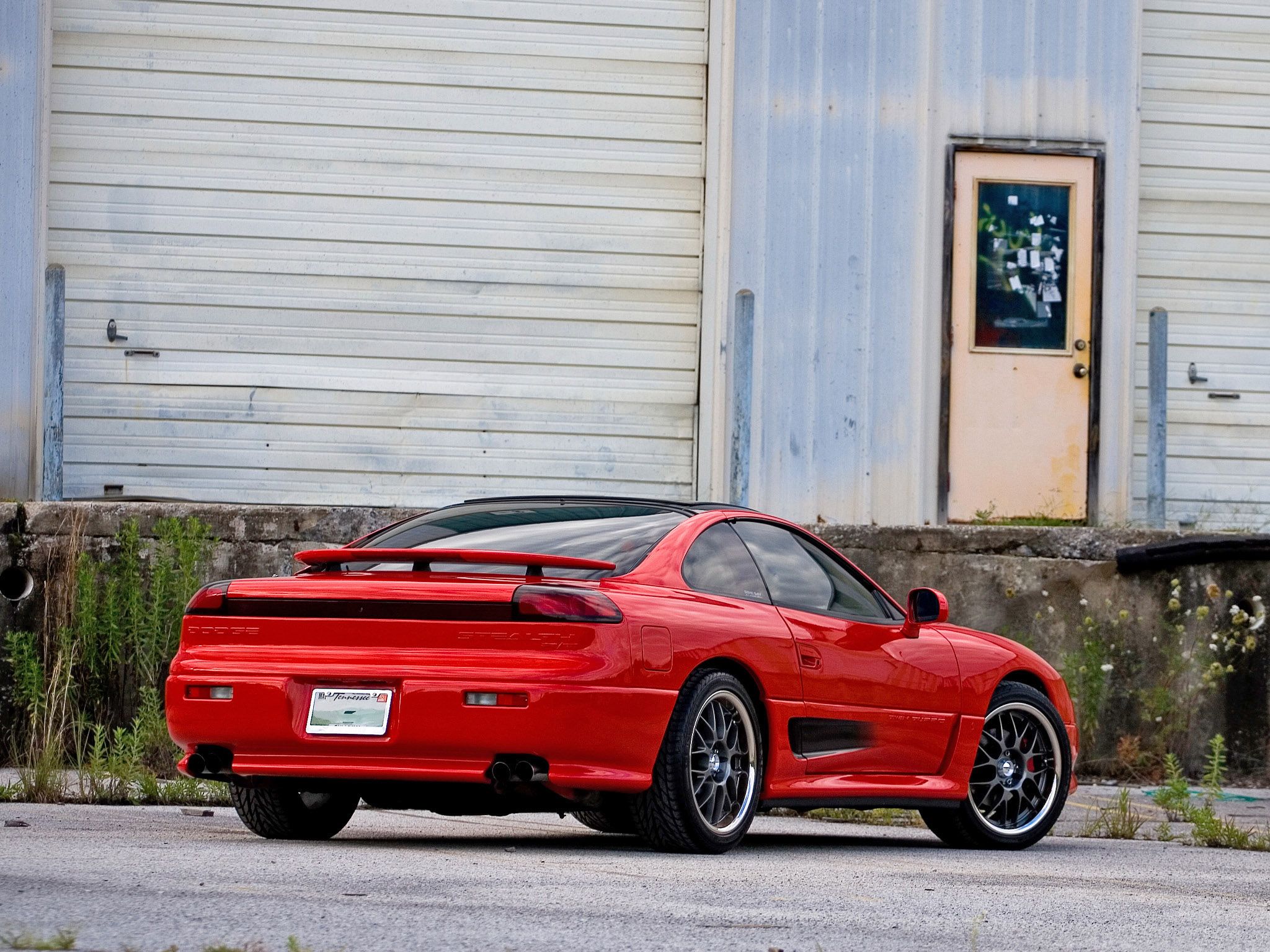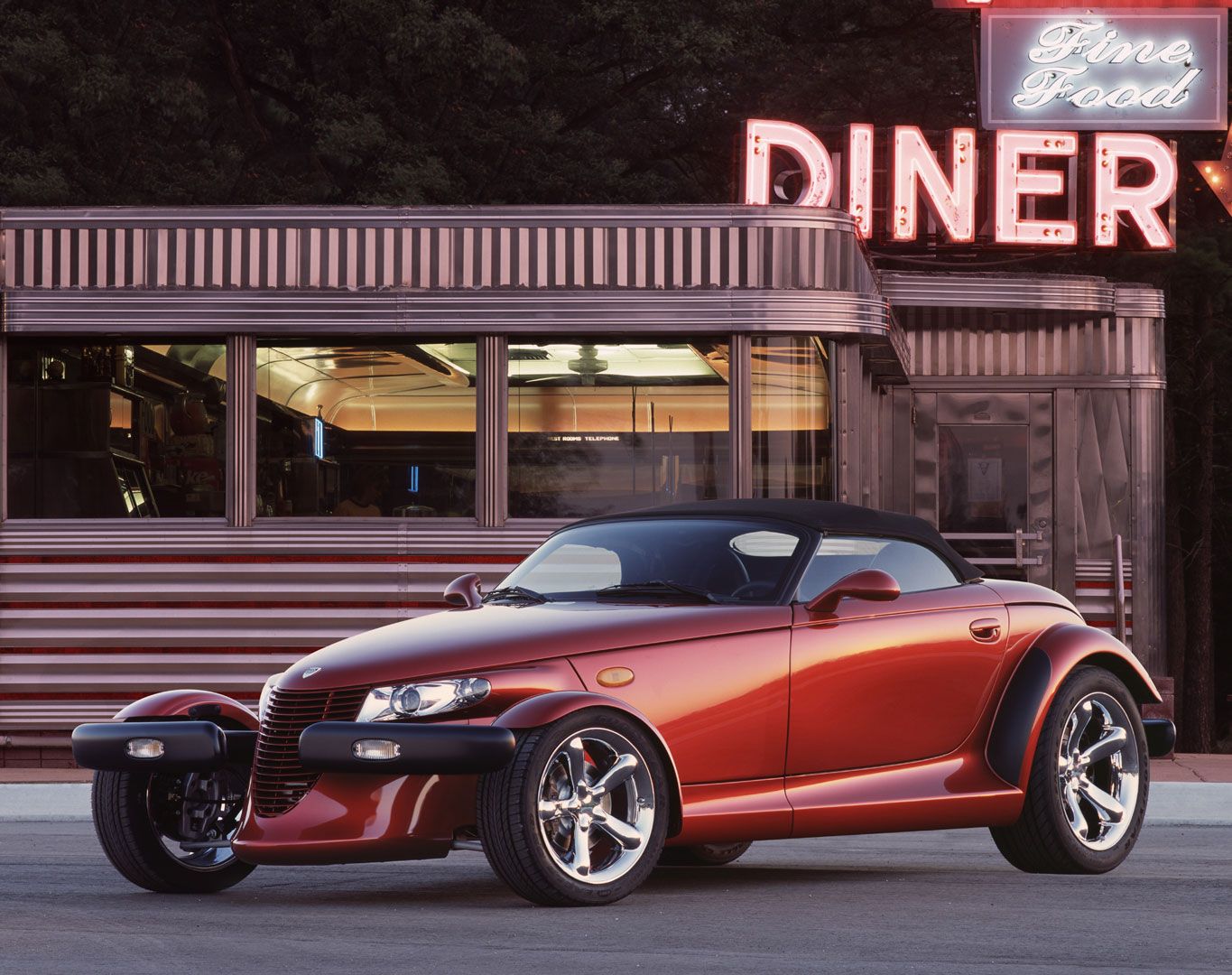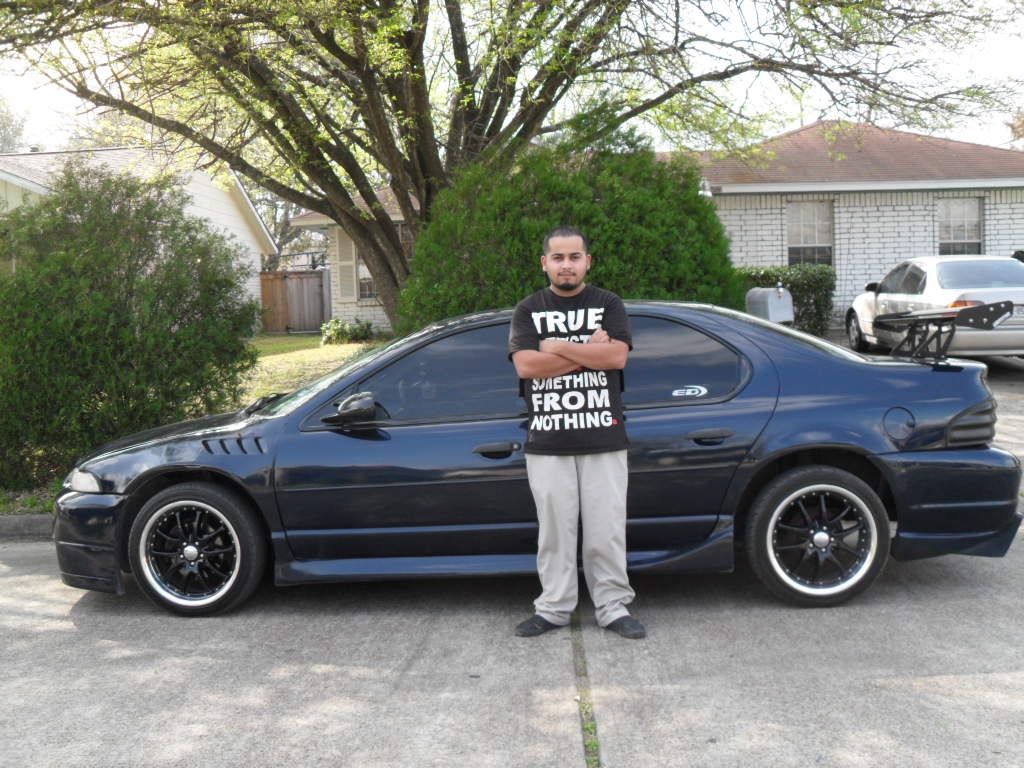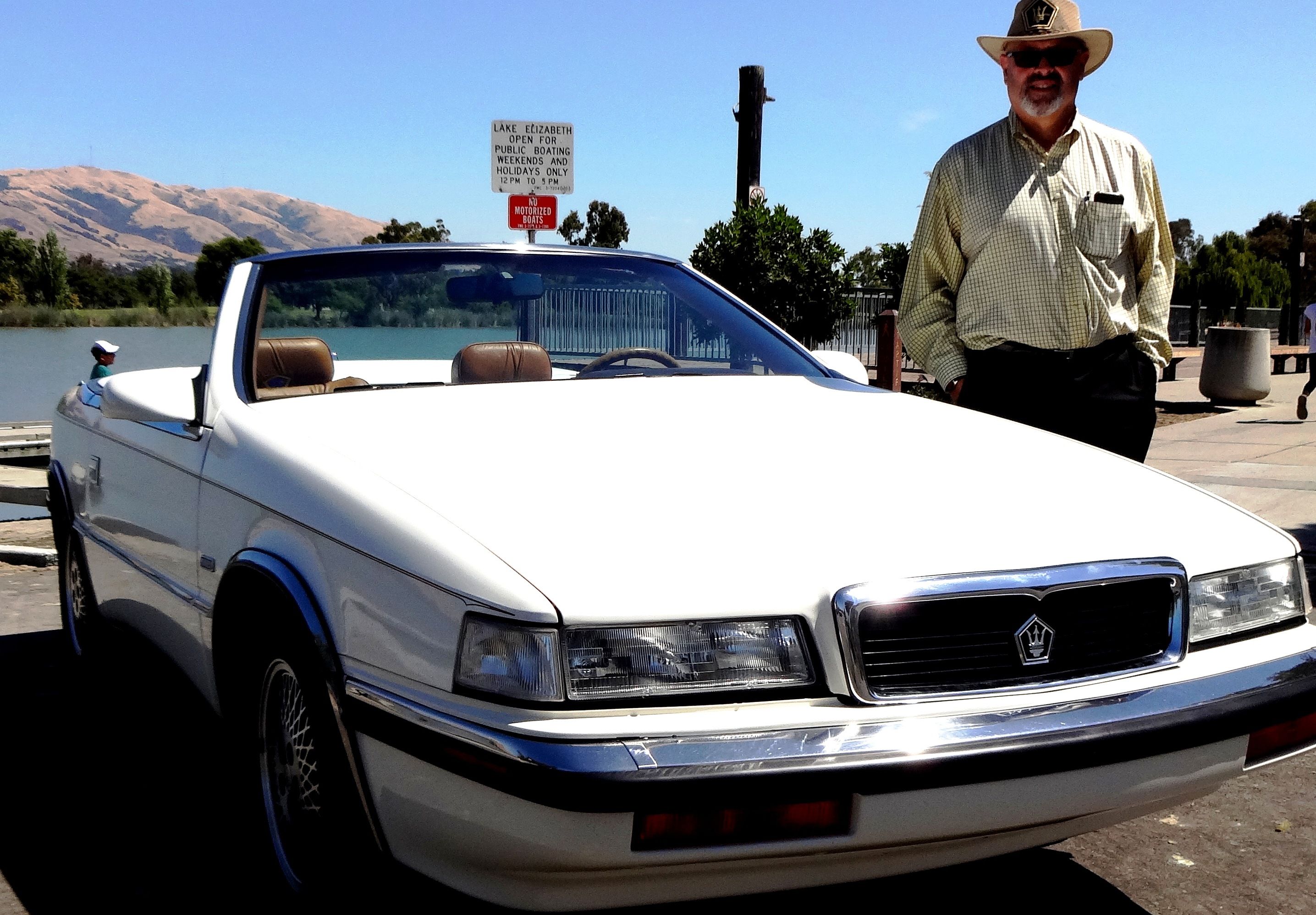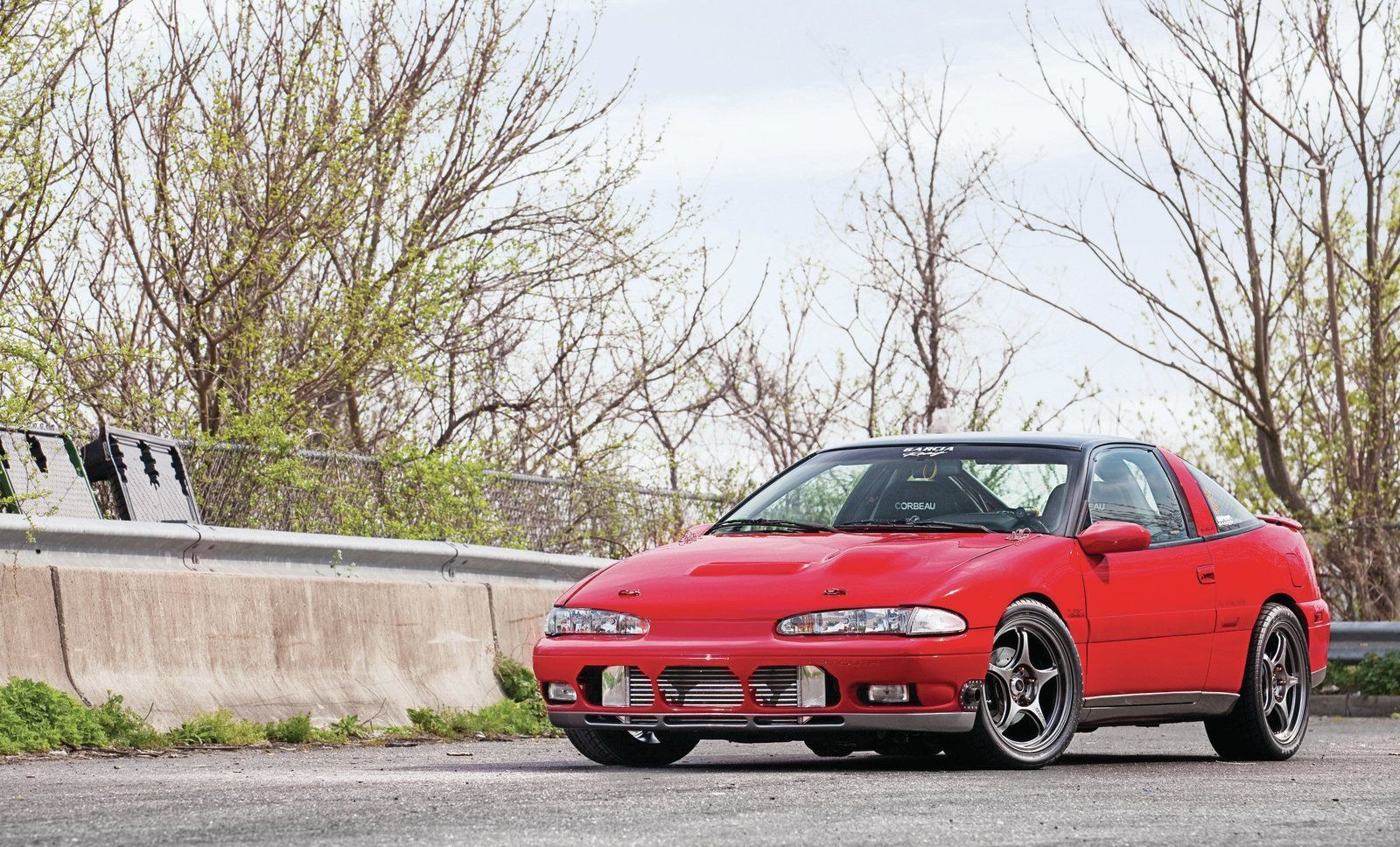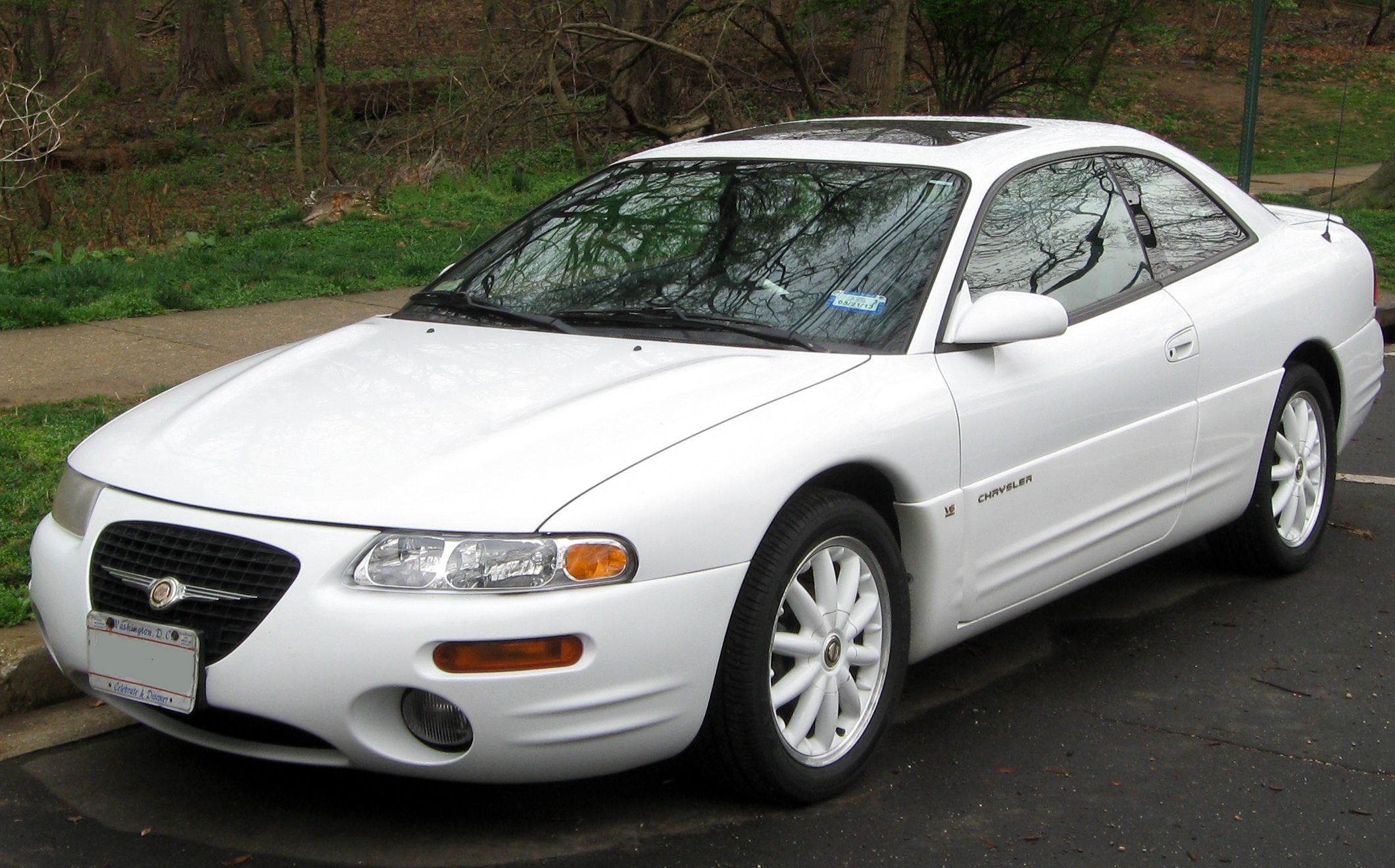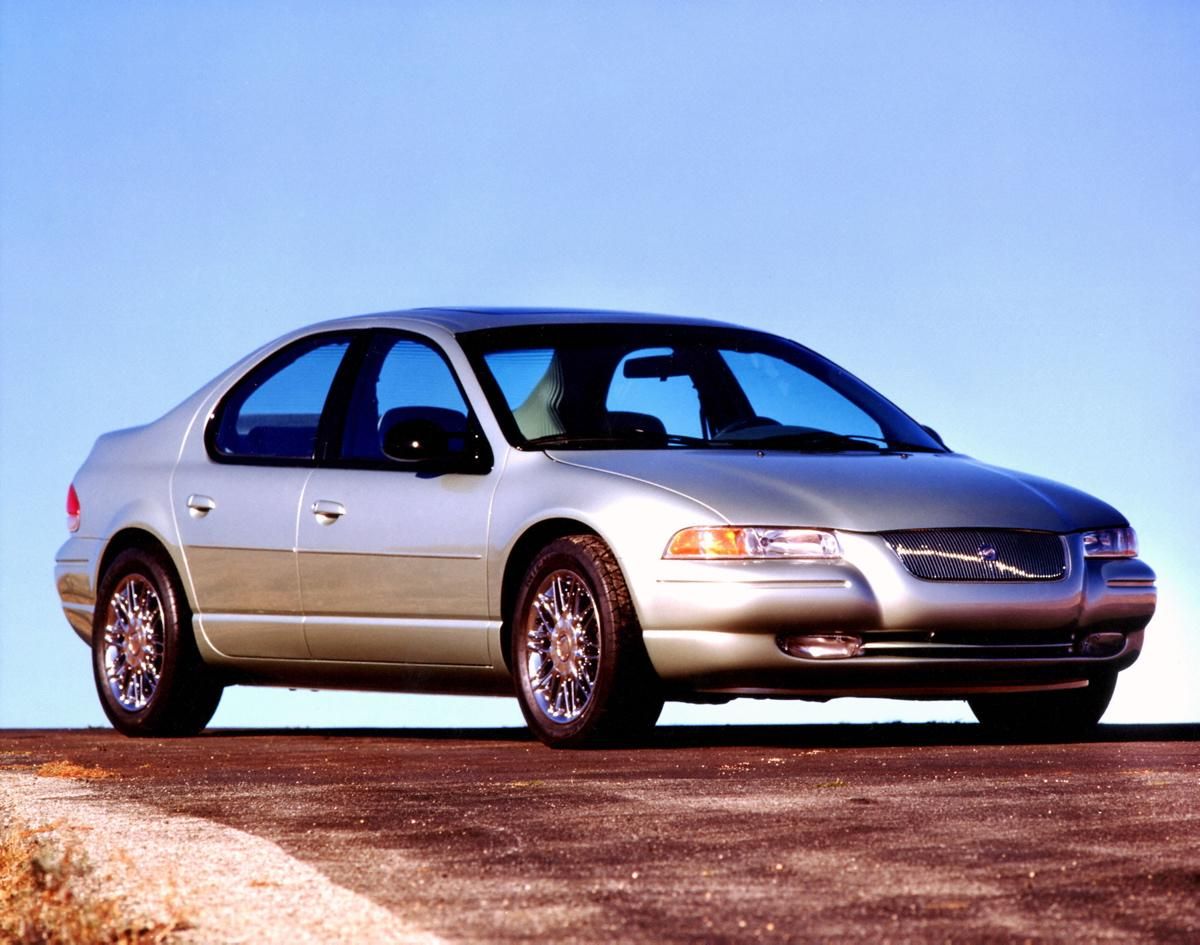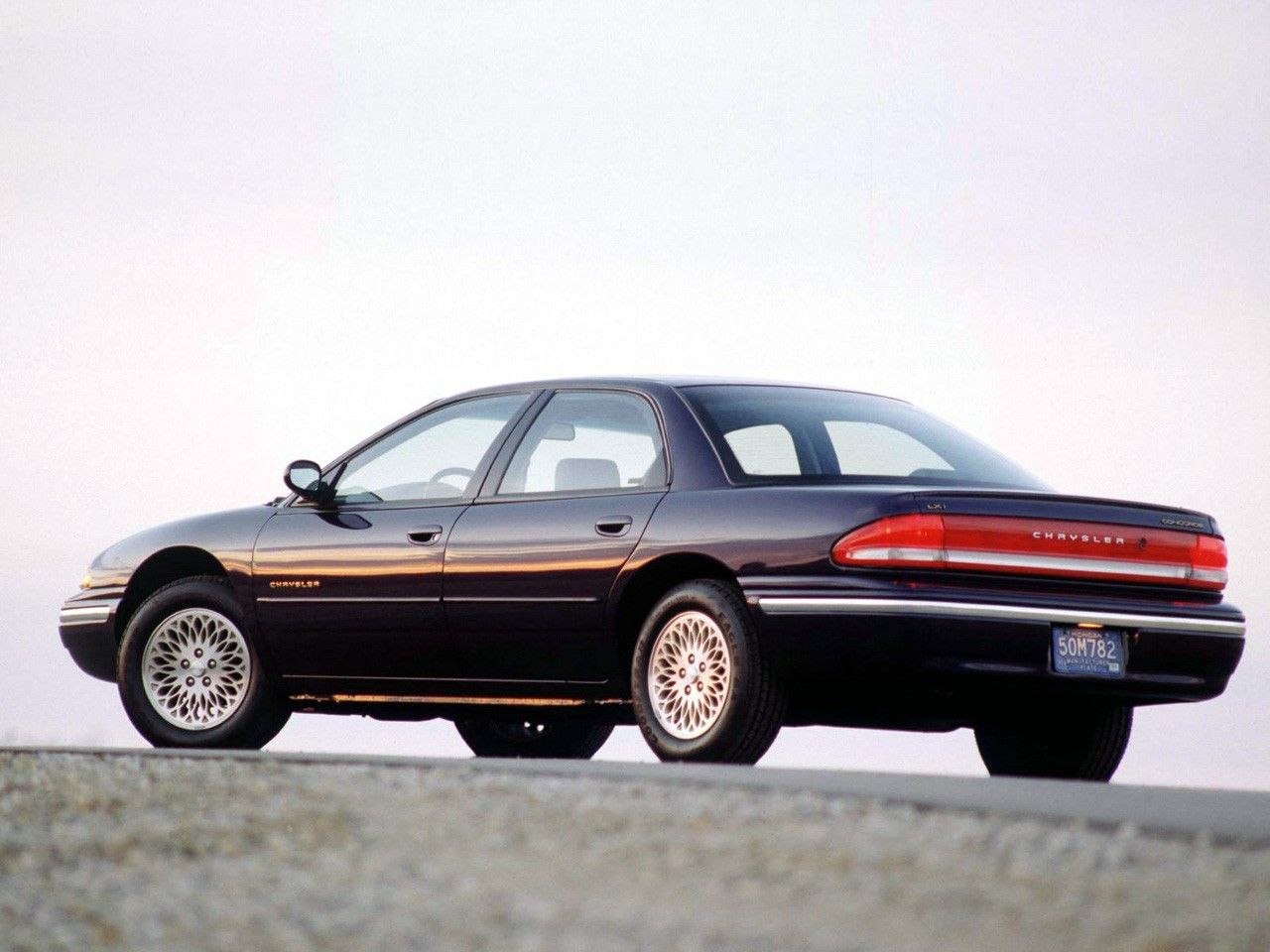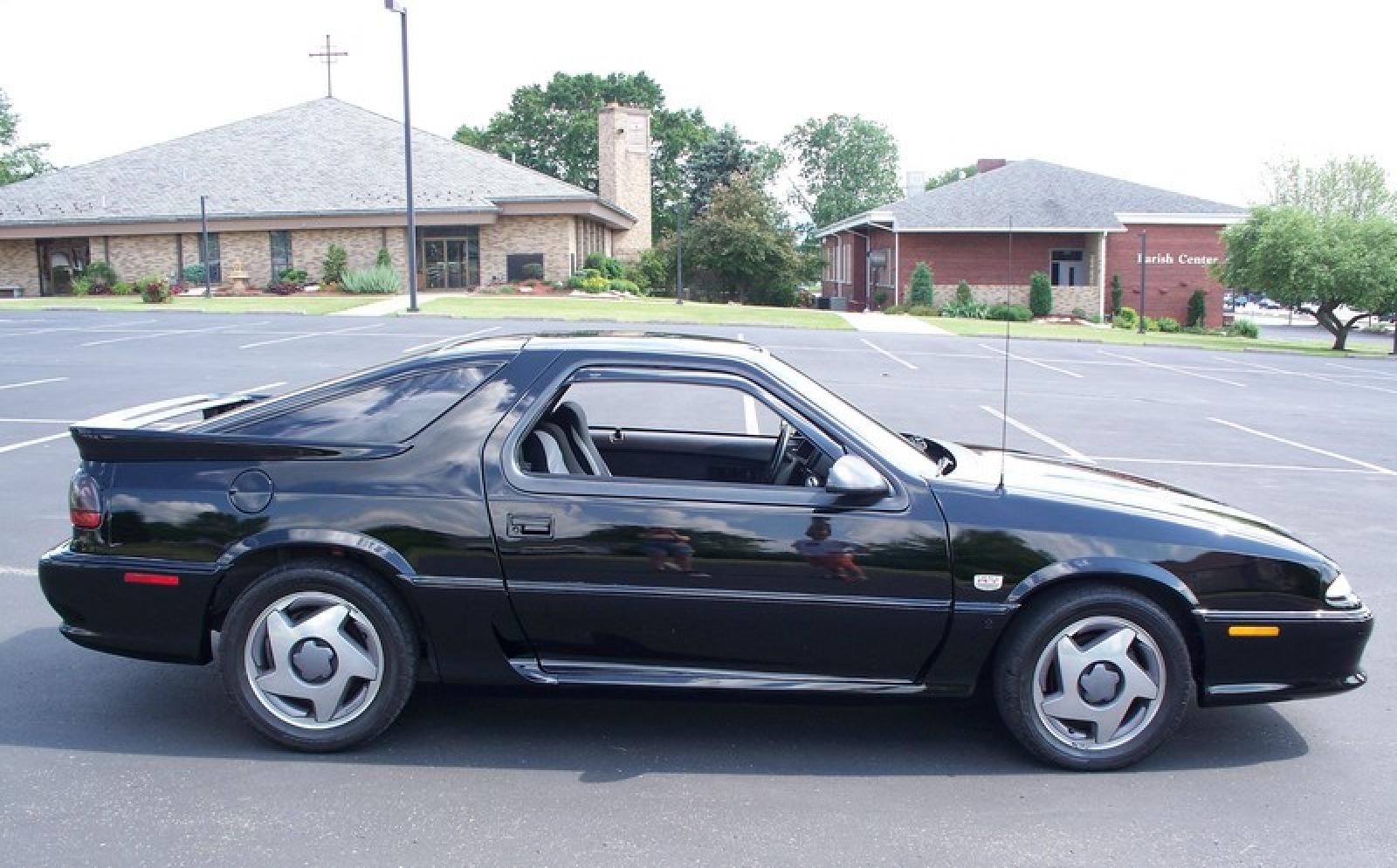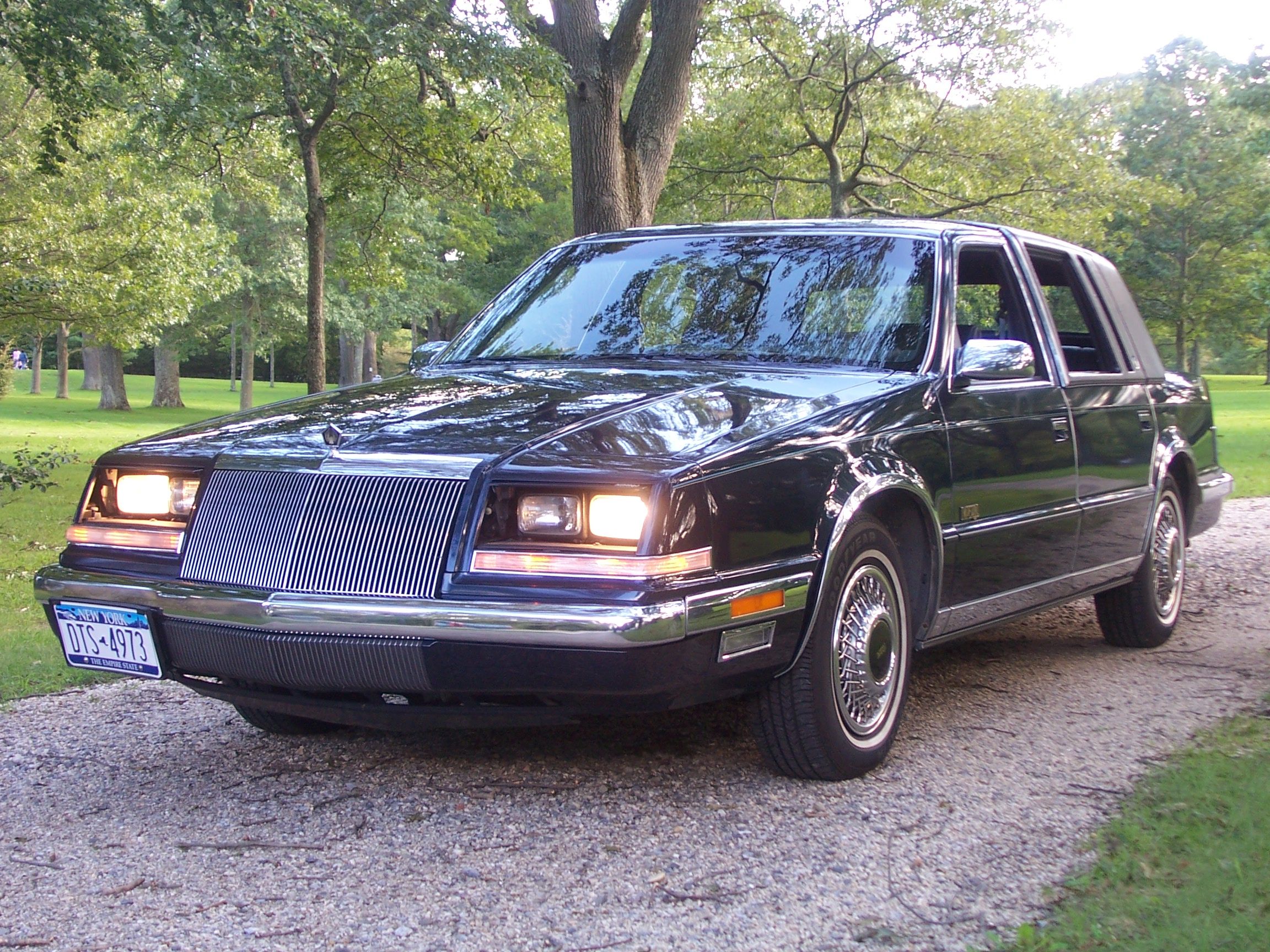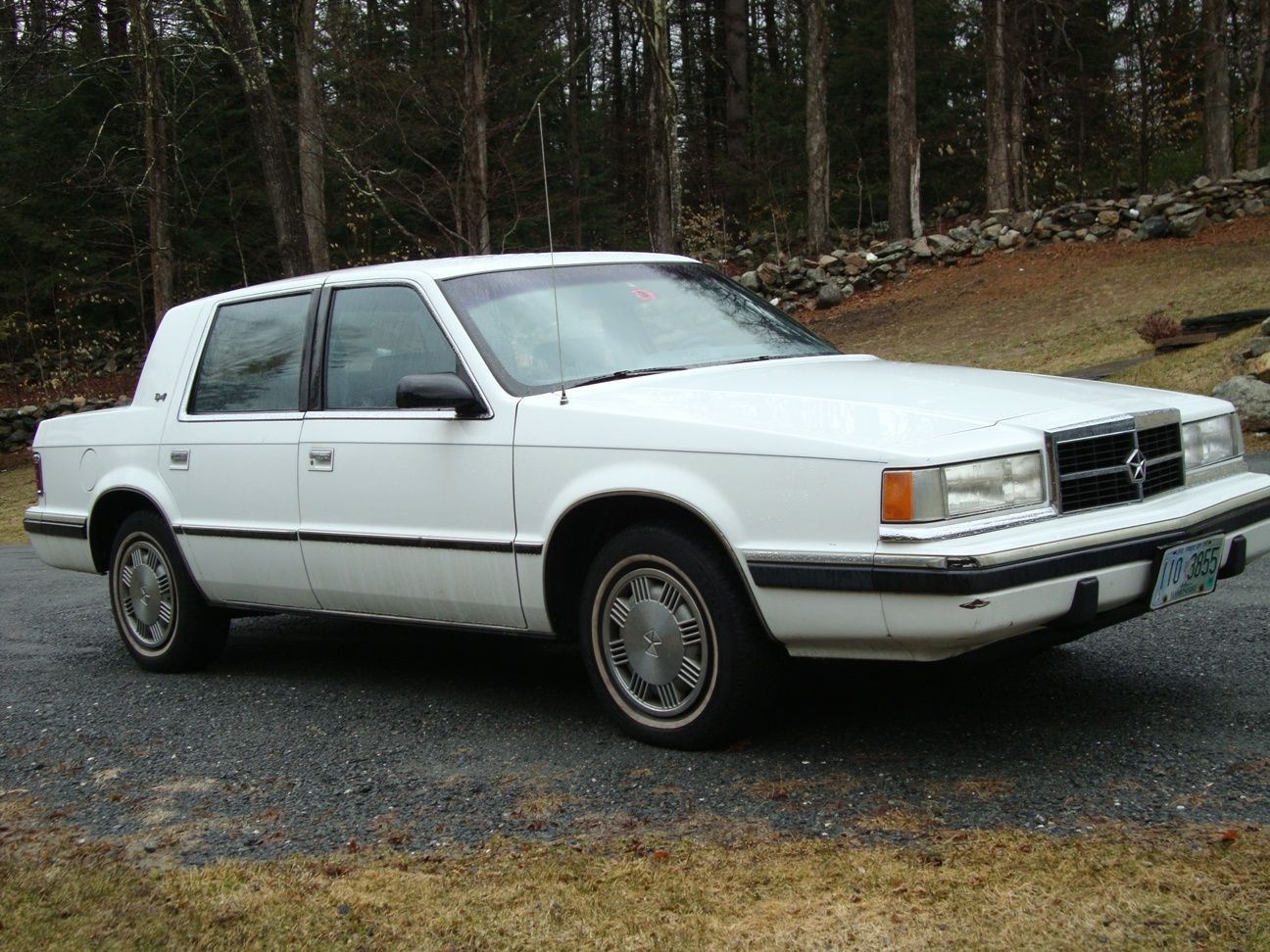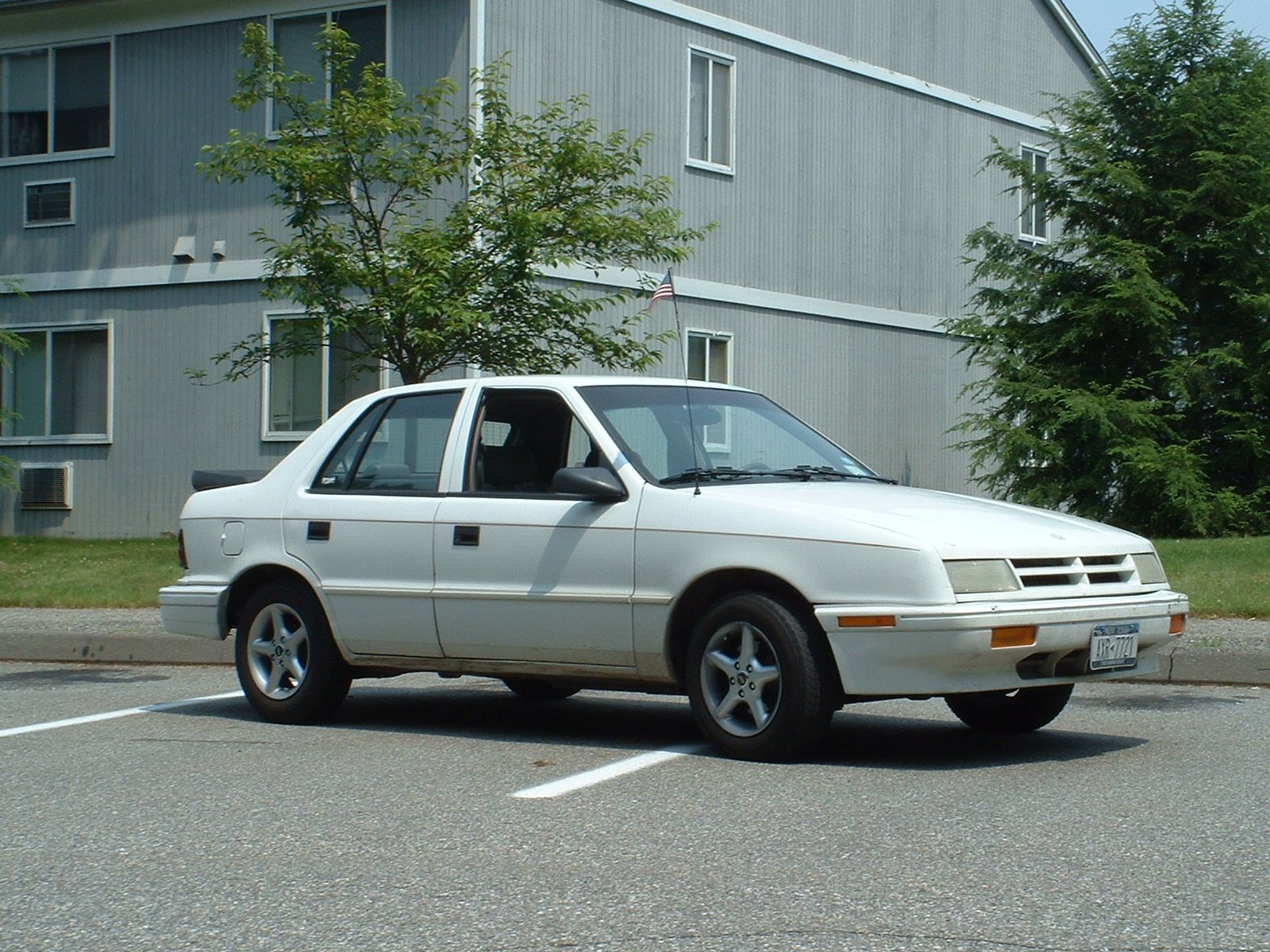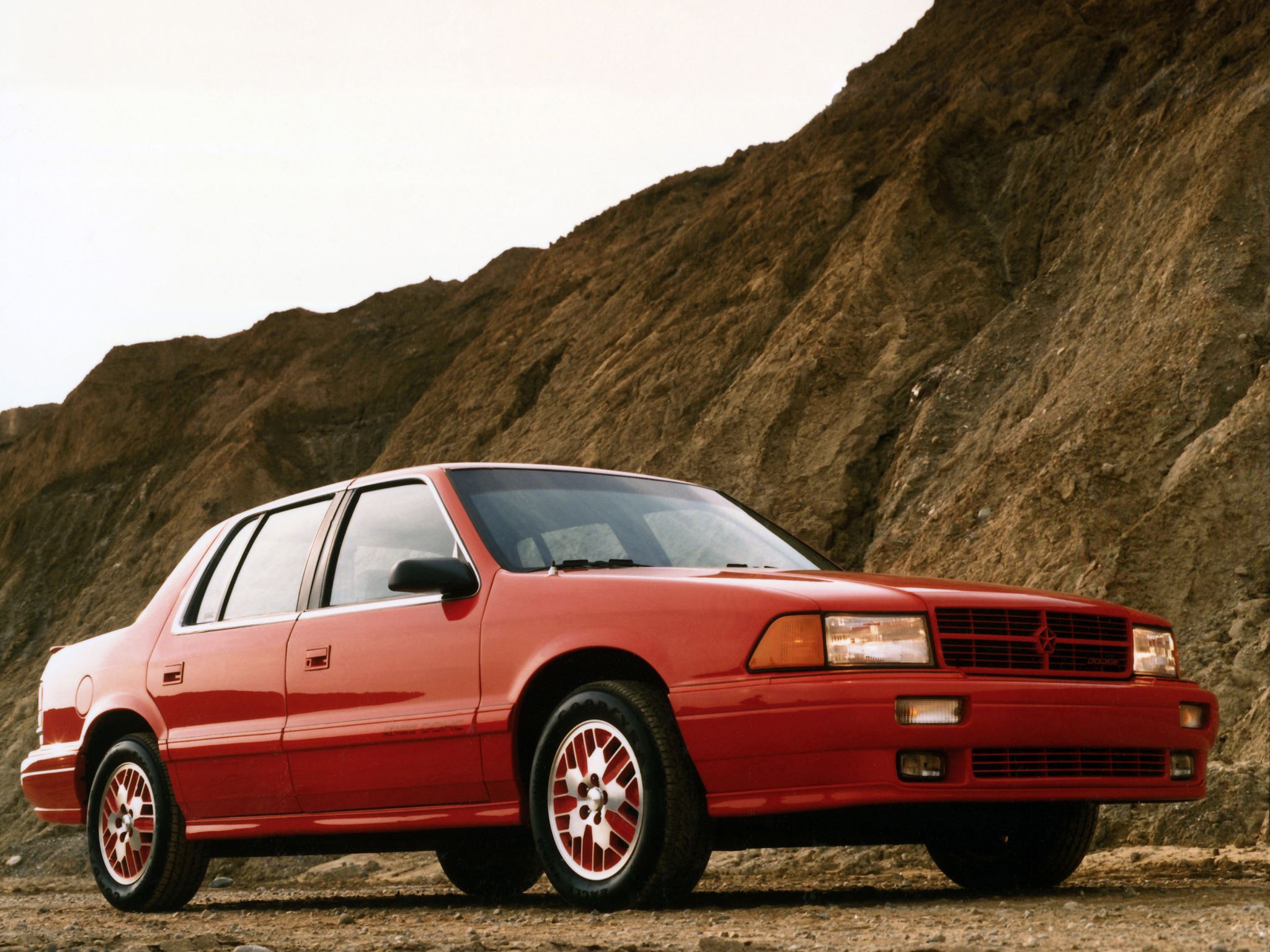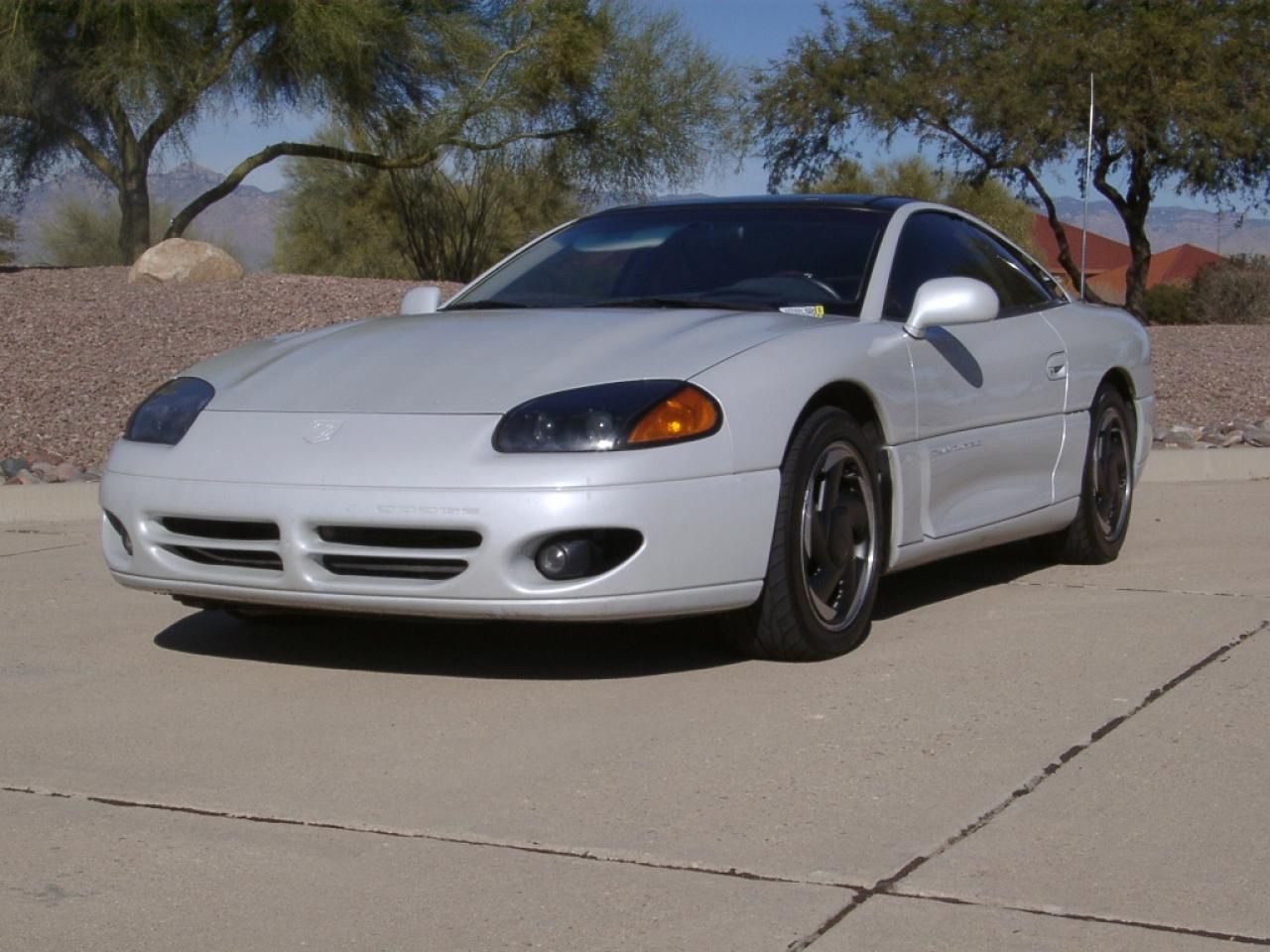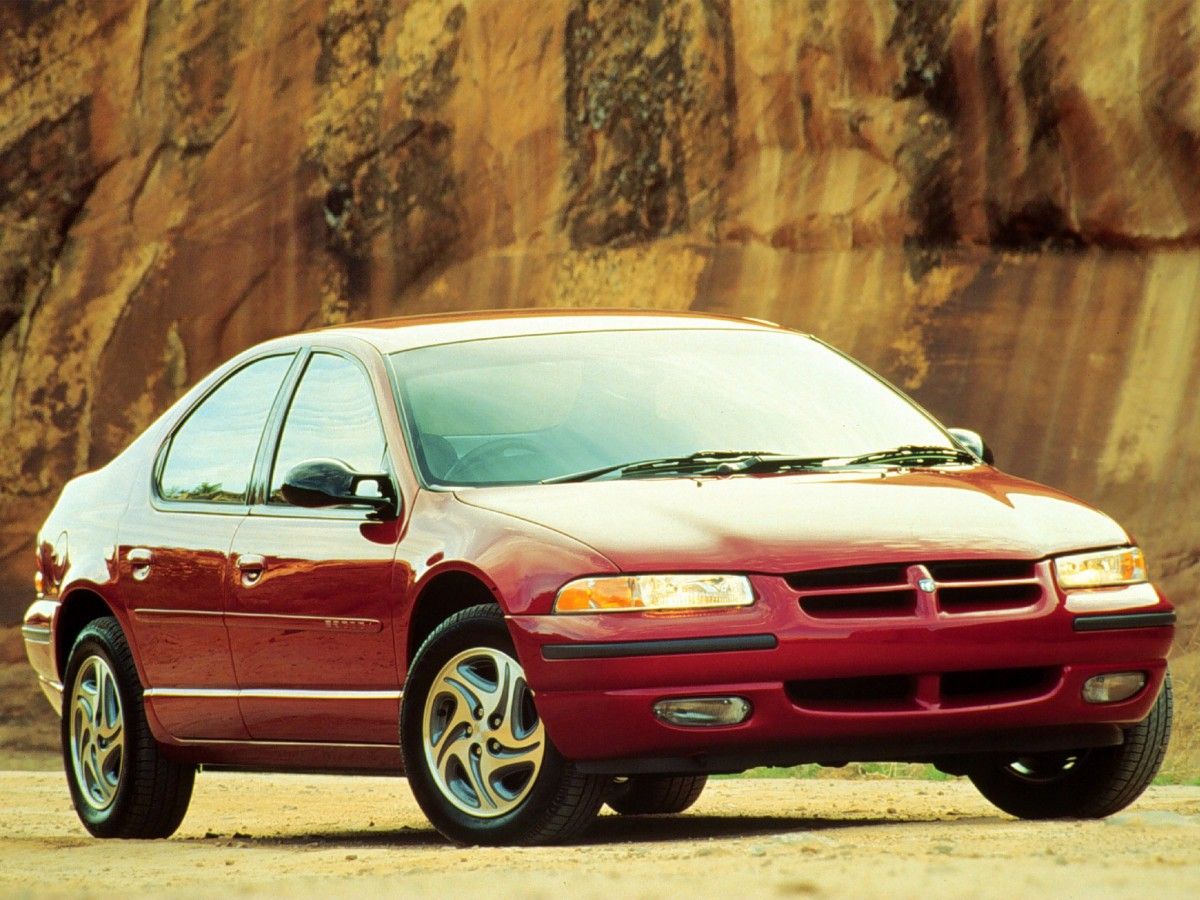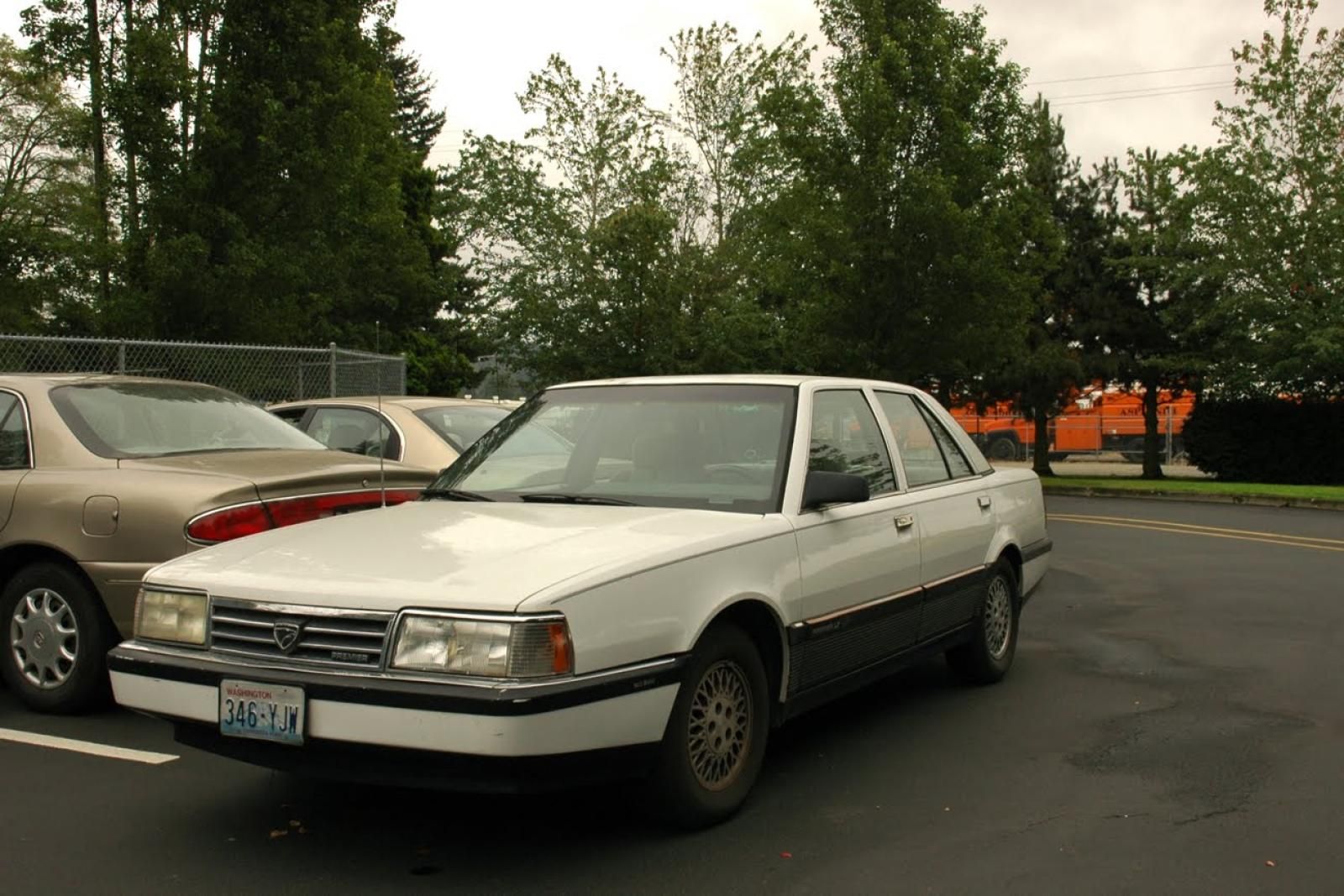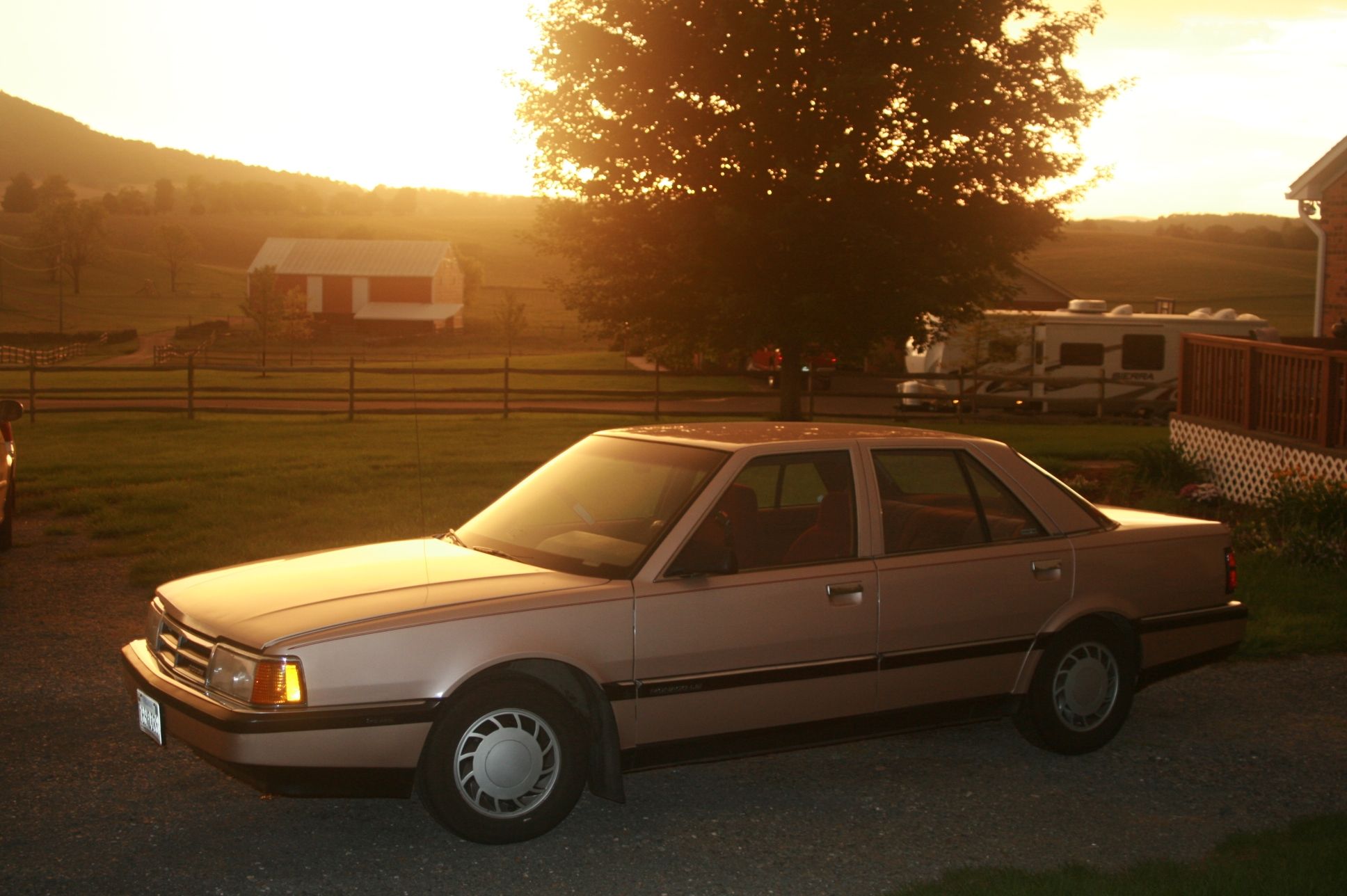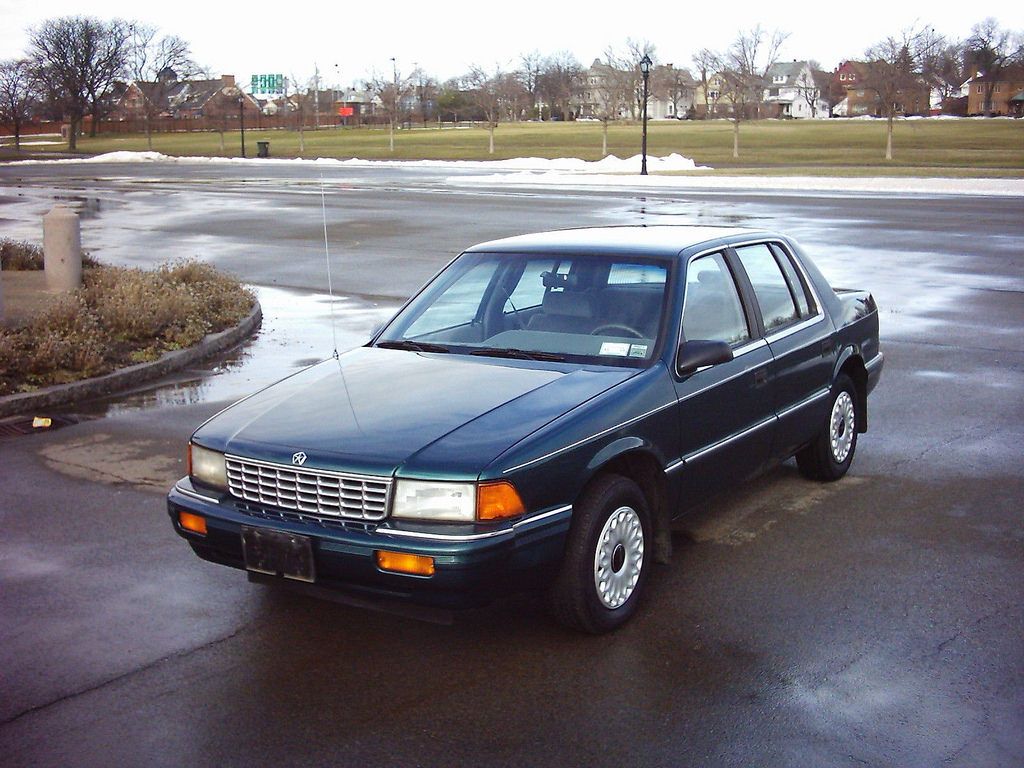In the 1960s, if you drove a Chrysler, it was something you could say with distinction. It represented the essence of proud American hands assembling modern American designs. Bold lines would proudly state the Chrysler name at every curve, assuring you that you were in the most modern car American manufacturing had to offer. In the early 1970s, Chrysler entered a golden era where they would release a handful of cars that would wriggle themselves to the top of collector lists over the following few decades, but not before the gas crunch of the late '70s would bring Chrysler's reign of 440 six-packs and 426 HEMIs to a screeching halt. Chrysler's incredibly simple and functional K-Car would then embody their position in the '80s as "The Official Car of the United States Government," or at least you'd think given how many were used for government cars. It's entirely possible that Chrysler stayed afloat throughout that decade on official contracts alone. As their K-Car's "Auto-Box" design appeal faded in favor of wildly successful Ford Taurus, Chrysler found themselves looking to reinvent their brands, as well as one last attempt to reinvent the K-Car chassis. This lead to a few great designs destined to be collector's pieces and a few cars that range from just basic to total blunder.
25 More Sense Every Day: Dodge Viper
Dodge had a reputation in the ‘70s with the success of the Charger, Challenger, Barracuda, and their variants. Over the years, Dodge had lost its connection to those roots. Dodge needed a new figurehead at the bow of their ship and that was the Dodge Viper; a 400 horsepower, 8.0 Liter V-10 supercar that owed no one anything. It’s fast, loud, angry, and unapologetically long and sleek, all while forcing you to have some kind of opinion. Bearing the established trademark grill of the future of Dodge, this timeless sports car will always have a place in history. Even 25 years later, the Viper still demands your attention on the road.
24 More Sense Every Day: Plymouth PT Cruiser
In its final days, someone at Plymouth finally had a vision for the Plymouth brand that had been flailing in the throes of an identity crisis planning the launch of the Plymouth PT Cruiser and similarly styled Plymouth Prowler. With both cars aimed at creating a fusion of nostalgia and modern design, the PT Cruiser would come too late to save the Plymouth brand and was rebranded and released under the Chrysler name. It would not be until the very end of Plymouth’s existence that they would finally establish a brand identity, and then promptly ported that new found identity over to Chrysler while pulling the plug on Plymouth altogether in 2001. The Chrysler PT Cruiser would go on to be a successful car that inspired a generation of modern recreations.
23 More Sense Every Day: Dodge Stealth Twin Turbo
Dodge’s relationship with Mitsubishi and its swath of rebadged Mitsus did not happen without creating at least one wonderful car under the Dodge brand. The Mitsubishi 3000GT was one of Mitsubishi’s greater achievements in the auto industry and the Dodge Stealth Twin Turbo elaborated that well-sorted platform. A friend of mine was once racing a Dodge Stealth Twin Turbo against a friend driving a 911 cross-country and was pulled over in Texas going over 100mph. When the officer pulled him over, he didn’t get a ticket, but instead said, “I heard on the radio that a Dodge was racing a Porsche over 100 miles an hour and the Dodge was winning. I just had to see what kind of Dodge could do that.”
22 More Sense Every Day: Plymouth Prowler
This was Plymouth’s true push to establish itself as a brand separate from its sister brands Chrysler and Dodge, where it had been relegated to being consumed as a rebadged brand of its two more popular brothers. The Plymouth Prowler and Plymouth PT Cruiser were poised to create a unique and unifying look to establish the Plymouth brand in a sea of otherwise unremarkable cars. It was a watershed moment for Plymouth, who had previously been robbing the parts bins from Dodge and Chrysler, to build a car exclusively for the Plymouth brand. Ultimately, the Prowler wasn’t able to excite customers about Plymouth and they shut their doors in 2001, but not without one more rebadging.
21 No Sense: Plymouth Breeze
This car is like a breeze. It’s nice for the first two to three seconds, and then after that, it’s completely forgotten. The Breeze was an uninspired model that was shoehorned into an already saturated market that brought nothing to the table that wasn’t already being offered exactly the same way by the exact same company, but also executed better by the competition in the segment. One of three redundant models in the Chrysler stable, the Breeze didn’t blow in the sales like the Chrysler executives had hoped and signaled the beginning of the end for Plymouth as the world would know it.
20 No Sense: Chrysler TC by Maserati
You can pour champagne on a llama and all you get is an angry, wet llama. In an effort to lure younger buyers looking for a sporty and upscale car, Chrysler queued up their Maserati resources to create the Chrysler TC by Maserati. Undoubtedly, this would be the finest collaboration between Italy and America since Rocky III. Chrysler TC owners would soon find that underneath the cleverly placed Maserati badges was essentially a two-seat Chrysler Le Baron that, according to Autotrader, would cost them $68,000 when adjusted for inflation with luxurious opera windows and a whopping 160 horsepower with the base Chrysler engine. While an optional 200 horsepower Maserati engine was available, it will cost you extra. In 3 model years, Chrysler sold only 7,000 units before calling it quits.
19 No Sense: Plymouth Laser
The Plymouth crowd is a difficult demographic to nail down. The only unifying theme between all five owners is that they own Plymouths and none of them consider Plymouth a “Performance Brand” in the Automotive Industry. This is what made the Plymouth Laser an ultimately unnecessary car for a buyer that didn’t exist. Released in 1990, an era where people had long forgotten the days of the mighty Plymouth Road Runner and in more recent memory recalled cars like the Plymouth Horizon and Colt, the Laser fell on deaf ears to an audience that favored economy over performance and styling. In spite of being a rebadge of the successful Eclipse econo-sport, Plymouth had lost the fleeting attention of the performance crowd and failed to appeal to the fans of import sports cars.
18 No Sense: Chrysler Sebring
Chrysler has been in the automotive scene since June 6, 1925, hailing from Detroit, Michigan, according to Chrysler. In the time that would follow, Chrysler had a few rises to the top and falls from grace. In the early ‘90s, Chrysler needed a moderately priced car for the masses with a hint of sport, style, and grace. The Sebring debuted as a practical car with a sporty nature and a free spirit once the top was fully dropped. The Sebring debuted with a startling 163 horsepower, 2.5 Liter V-6 that left owners feeling the need to cut holes in the floorboard to help push the car to the heights implied by its suggestive body lines. With a lack of features, reliability, and value compared to every other car in the class, the Sebring did not help solve Chrysler’s ‘90s woes. America’s favorite “Car I Got on Craigslist for $1,000.”
17 No Sense: Chrysler Cirrus
If the Sebring wasn’t forgettable enough for you, maybe the Cirrus will do the trick. Here is a car so unremarkable that it’s named after a cloud that most of us forgot about. The Chrysler Cirrus was intended to fill a midsize sedan vacancy in the lineup and was so bland that not only did customers forget to buy them, but Chrysler Corporate forgot to cancel them until 2000. For five years, Chrysler produced several variations of these cars including the Stratus and the Breeze. These JA Platform cars would be referred to as “Cloud Cars” and just as quietly and peripherally as clouds, these cars passed by the market as fast as consumers passed by them on car lots.
16 No Sense: Chrysler Concorde
Ranked #1 on “Cars Owned By People Who Don’t Know or Care What Kind of Car They Drive.” The Chrysler Concorde simply lacks ambition as a car. It serves the purpose of being a Cirrus, but a little larger. It’s the Sebring of Concordes. With 153 horsepower and seating for 6 as listed by KBB, this 3,446-pound gorilla can barely get out of its own way. Chrysler was in a hurry to put their boxy ‘80s cars behind them and developed the Concorde to replace aging lines whose loyal following were dwindling as the rectangular designs fell out style. Unfortunately, you could expect the same level of reliability and quality as any Chrysler of the era in this entry-level full-size sedan.
15 No Sense: Dodge Daytona
This car had a plan. The engineers were sure that smaller and faster turbo cars would replace the gas-guzzling muscle cars of the ‘70s, so they designed this mind-bending automotive experience to engage the racer that also would prefer to respect speed limits at all times while avoiding any rapid changes in velocity or trajectory. The Daytona name conjures up images of the legendary 426 HEMI and 440 Magnum. In 1969, the Daytona was undeniably purpose built sans apology. The 1990s iteration of the namesake would leave customers asking for a DNA test to prove this car had any relation to the legendary 1969 Dodge Daytona that bore the name decades earlier. Chrysler hoped to drum up dollars with nostalgia but wound up drumming up disappointment instead.
14 No Sense: Chrysler Imperial
This dinosaur escaped the meteor and that didn’t do anyone any favors, particularly not Chrysler. By the 1990s, Chrysler had lost a lot of ground in the luxury car market and as competitors Mercedes-Benz and BMW were building increasingly more curvy and attractive cars, Chrysler seemed to be doubling down on the rolling Kleenex box. Instead of innovation, the Imperial would be distinguished by slightly more rounded edges in the rear, an angular grille, and hidden headlights. Anyone that’s owned a car with hidden or flipping headlights knows why these are really just hidden headaches waiting to push the limits of your patience and your wallet.
13 No Sense: Dodge Dynasty
There were two dinosaurs that somehow managed to exist in the ‘90s while a relatively major shift was happening industrywide toward more modern styling. The Dodge Dynasty would be another variation of Chrysler’s aging and less than successful C-body Platform revival. The Dynasty, like the Imperial, would be marketed to a consumer that simply no longer existed. By 1993, the Dodge Dynasty would be discontinued and replaced by the more modern Dodge Intrepid as Chrysler began aiming the Dodge brand at younger buyers and banking on the Greatest Generation to keep Chrysler’s lights on. The only misstep is that the Greatest Generation was retired, largely stationary, and not looking to buy what should have been the Dodge Dyno-saur.
12 No Sense: Dodge Shadow
This is one of six million models of the exact same car and no one knows why you would buy the Dodge over the Chrysler version, or the Plymouth, for that matter. But what does it matter? They’re the same car. On the outside, they bear all the familiar angles of the Chrysler lineup, and under the hood, you can expect the same underpowered, unreliable, Mopar power plant. The Dodge Shadow seemed like a car that would be the essence of practicality with a dash of daring. The reality of the design left you with a conservatively flat retooling of tin to make the K-Car’s unappealing platform edible. While it missed that mark, at least someone bought one, so there’s that.
11 No Sense: Dodge Spirit R/T
Nothing says “I’m sporty, but really quite practical” like a Spirit R/T. It gets a visual treatment to imply the car is in some fashion sporty. An impressive 224 ponies push this 3,000-pound pachyderm to 60 in a respectable 5.8 seconds, according to Car and Driver. Who wouldn’t want yet another variation of the particularly weathered K-Car chassis with a decent engine in it? As it would turn out, pretty much everyone. Only a few thousand were sold in America and in a few short years, the Spirit R/T would only manage to exist in spirit.
10 No Sense: Dodge Stealth (Base Model)
164 HP is not for lightweights. With that much-unabashed horsepower raging under your hood, your best bet to impress is a high-quality car wax and great lighting. The base model Dodge Stealth is everything you want in a sports car without the hassle of the “sports” part… so, it’s a car that looks like a sports car that only anyone driving in or around it would know is not. Your secret is safe. The sportier big brother, Dodge’s Stealth Twin Turbo, was the only offering of this model that Dodge needed to produce. Most Stealth models were a sheep in wolf’s clothing, which is generally unsatisfying.
9 No Sense: Dodge Stratus
The Chrysler Cirrus is such a great car, Dodge rebadged the beauty and sold it under the big D. Customers unsatisfied with Chrysler’s Cirrus could now turn to Dodge for the exact same car with different cloud name on it. This sparked a few sales in spite of this brilliant approach of giving the customer exactly what you want them to have. What this line was in dire need of was a redesigning, not just a rebadging. It offered buyers the standard available options of wheels, tires, engine, brakes, doors, seats… you know, the luxury stuff. Chrysler’s laziness had reached a peak near this point in their timeline.
8 No Sense: Eagle Premier
The Eagle got off to an interesting start by winning over fans of unusual cars that serve a practical purpose but created an image that was less well received by the general public. The answer to that problem would not be the Premier. As a manufacturer that was known for their oddly proportioned off-road wagon, an Eagle luxury car is something no one ordered; seemingly literally. The Eagle Premier only managed to sell a handful of their projected unit sales and was not considered a success. Built on a Renault platform, it didn’t stand much of a chance with buyers that had already shown a lack of passion for the maker and a lack of trust with Eagle.
7 No Sense: Dodge Monaco ES
Another revival that needed to be left out in the pasture and had no purpose in the lineup with no chance of helping bring fresh life to the Chrysler brand. This car is best forgotten altogether… which is good because almost everyone did. The Dodge Monaco aimed to be an outlet for production of the Eagle Premier, which was built on a Renault platform, which made the Dodge Monaco so far removed from it’s American Dodge roots, that it took more convincing that Dodge could muster to get these cars parked in garages across the nation. Only running from 1990-1992, the Dodge Monaco ES ranks pretty high on the list of Forgotten Cars.
6 No Sense: Plymouth Acclaim
Another victim of rebadging. This car had so many badges and re-brandings, it’s hard to distinguish one from another and which models were the same as which. All domestic manufacturers were getting away with this in the ‘80s and ‘90s, but the level of redundancy in the early ‘90s Chrysler lineup may have been a peak example of over-saturation. The Acclaim, Spirit, Saratoga, and LeBaron all existed when quite possibly none of them were necessary. The K-Car had run its course, but Chrysler wasn’t letting go so quickly. They softened up the corners, updated the tin, and continued to try and sell their K-Car until 1995. In the end, the K-Car was a good investment for Chrysler, but not for consumers. Improving performance and reliability would have been a better move.


